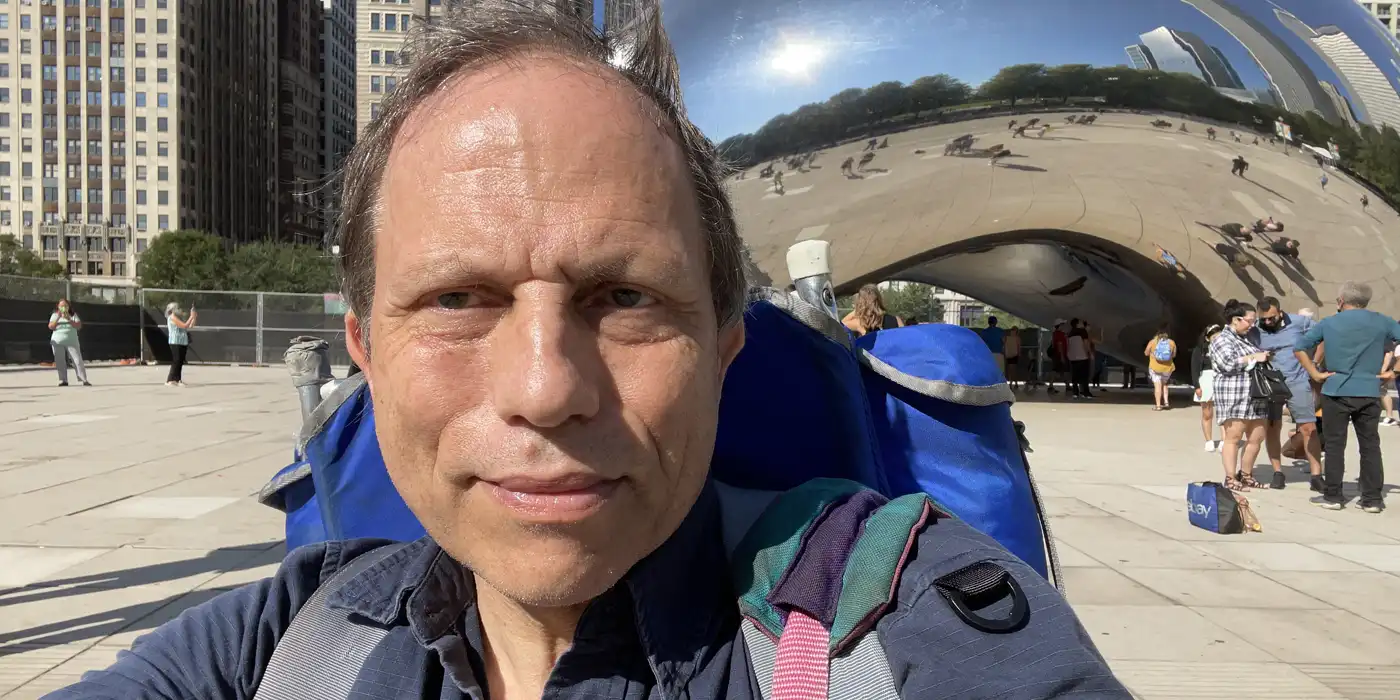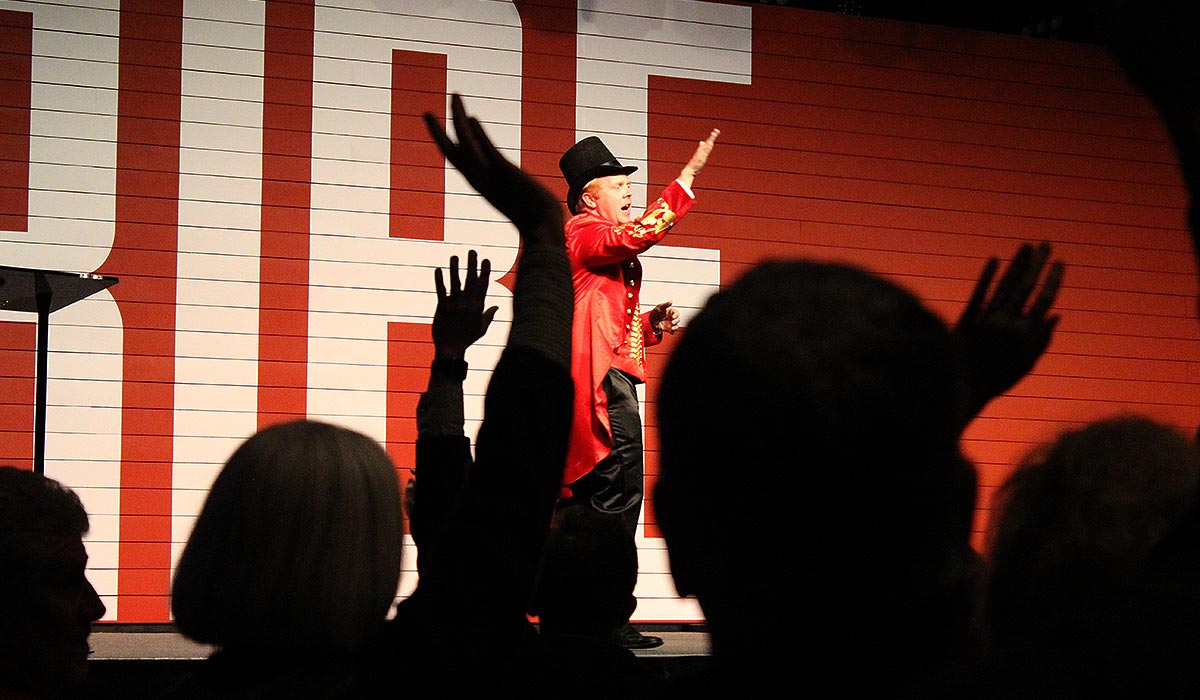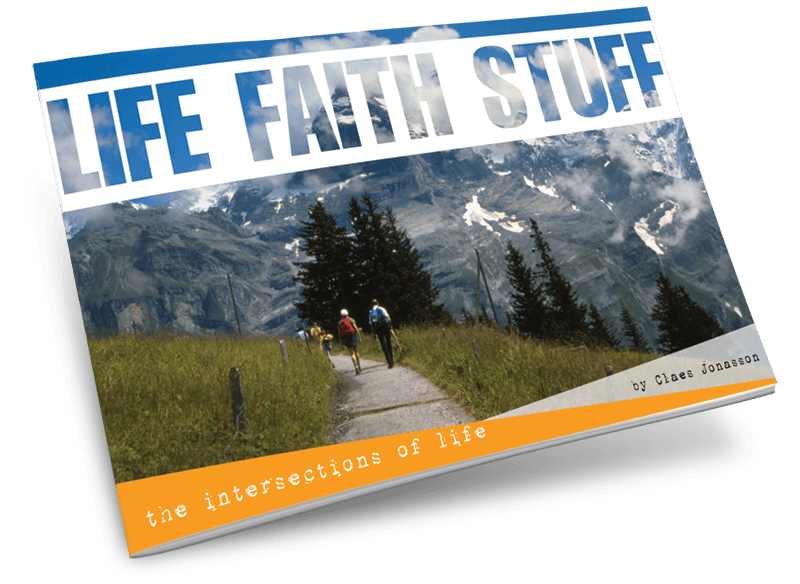It’s about time _________
The scene: An old factory where they used to build Magic Chef stoves. It could have been torn down, but instead is now a combination of eateries, boutique shops and event venues. With a farmers’ market on Saturdays. The perfect place to bring over 250 creatives, writers and bloggers together. This is the Tribe Conference, held in Franklin, Tennessee. People came from all over the US and a few other countries.
This year marked my 3rd time at Tribe. Each year has been totally unique. (My report from last year’s Tribe Conference.)
The Tribe Conference is the brain child of Jeff Goins, writer, blogger, coach and mentor. From Friday afternoon through Sunday afternoon, there were sessions with top-notch speakers, trainings, and lots of time to connect with other like-minded people. Because everyone there has a common desire to get a message out, to make a difference in this world.
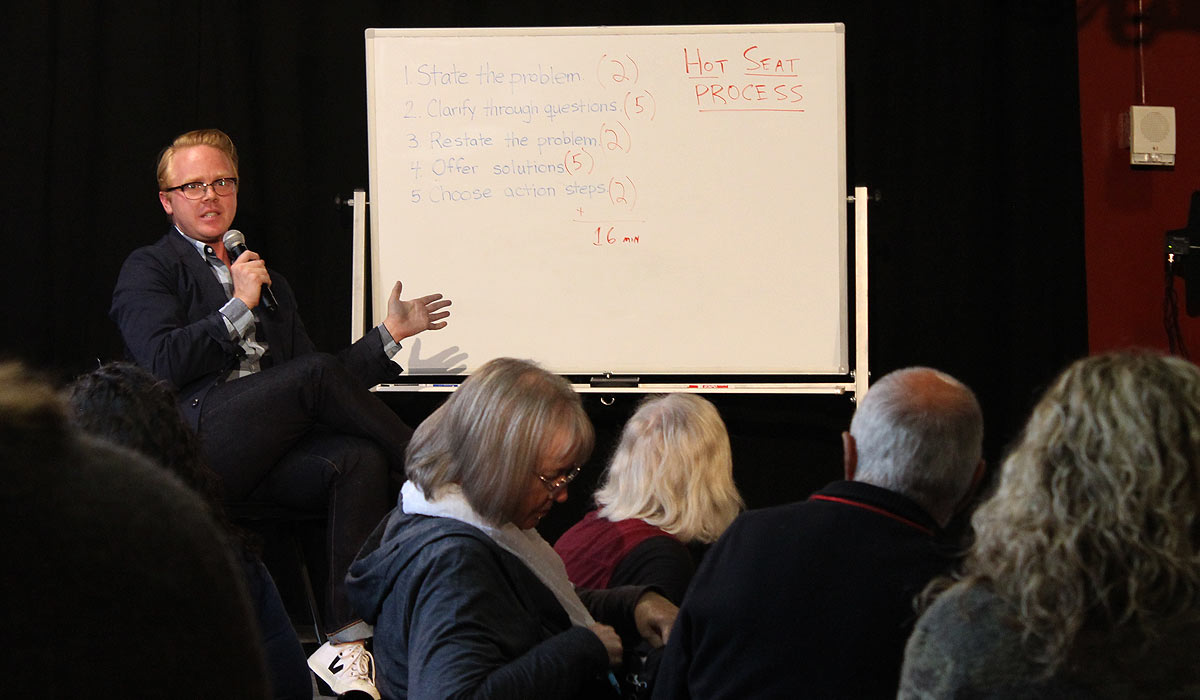
Friday started right off with a hot seat session for premium attendees, facilitated by Jeff himself.
The hot seat approach is great for getting unstuck. Person A shares a question or problem they’re dealing with. The other 3-4 people around the table then have 5 minutes to ask clarifying questions. Goal is to dig deeper. To get all the facts.
Once that’s done, person A will restate the question or problem, based on the conversation so far.
For the next 5 minutes, the others offer solutions and possible next steps.
Finally, person A picks the 3 or so things to implement for going forward.
Sounds simple, doesn’t it? Maybe even a bit silly. But so very effective. Just the thing to get past a roadblock and move forward again.
Each round takes 16 minutes. By the time you’ve gone all around the table, you know each other much better and have additional ideas from questions the others raised.
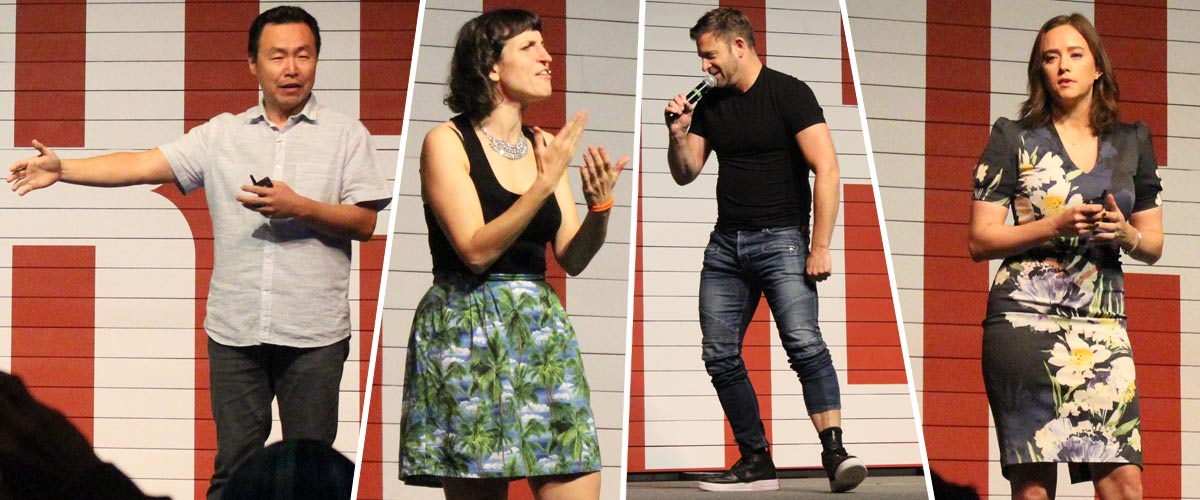
“We don’t connect over our pretend perfection. We connect over our shared struggle. Be brave enough to go first.” — Paul Angone
The 18 conference speakers are all very different. Some brought practical steps, ready to apply. Think effectively using video on YouTube, public speaking, or getting that book you’ve dreamed of onto paper in the next 90 days.
Other speakers very much focused on the creative process and what will help us keep going for the long haul.
“You can easily succeed your way into failure.” — Todd Henry
We become known for something that we are good at. Then keep doing it and fail to grow further.
We can also become so focused on a task that we fail the mission. Rather we must keep our eyes on the bigger picture and continually take risks as we move on a path of constant reinvention and growth.
Marsha Shandur, in the way only she can and with a British accent, reminded us that people around us will follow our physical cues, because they don’t know what’s going on inside our heads. So if we behave calmly and with confidence, people will think we are just that.
Melissa Dinwiddie brings a whirlwind of play to help us all be more creative. A few of her tips:
- Think process, not product. The purpose is to play, to feel alive, to do.
- Think tiny and daily. Doing a little every day keeps us in the creative stream and we’re more likely to make the big breakthrough eventually. I talked to a writer afterward who is now starting on a daily writing habit of writing for 15 minutes a day. Doesn’t sound like much, but that can get her next book written in the coming year.
- Just start — anywhere. If we overthink and over-intellectualize, we don’t do anything.
“Self-awareness + self-compassion = the key to everything good.” — Melissa Dinwiddie
Chase Jarvis, photographer and co-founder of CreativeLive, pointed out that being creative is about replication: “I did this, I can do it again.”
Also, none of us can stand out and fit in at the same time. We can’t start infectious ideas by hiding our work. So we need to get out where others can see.
As Charles Lee put it: “Always act like an apprentice.” We can either stay comfortable and fit in, or we can pave the way. Just can’t do both. Ever.
“Dream big. Start small. Keep moving.” — Charles Lee
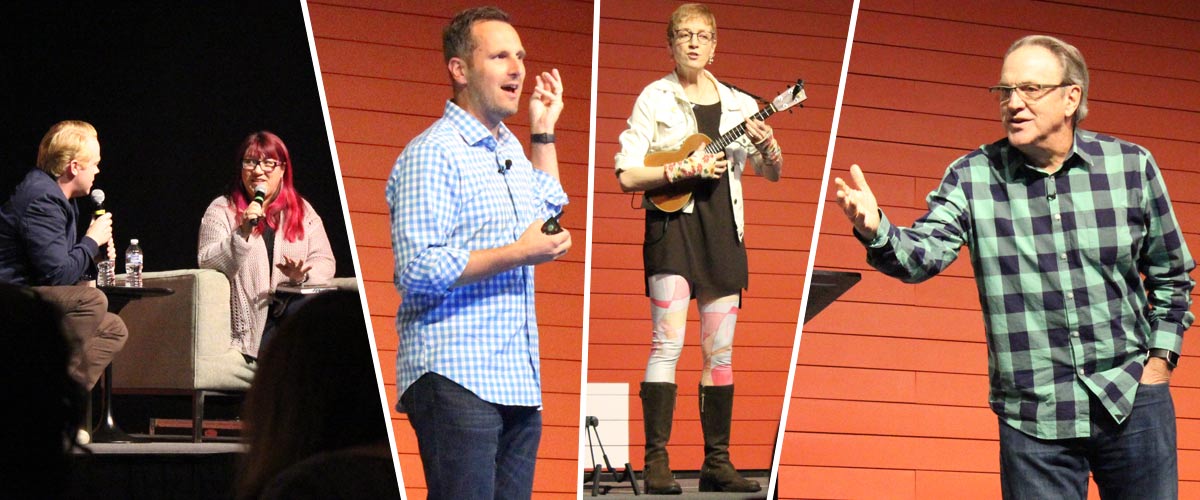
Dave Delaney brought us the “yes and…” concept. It’s about how we interact with others. Interpersonal interactions often are rushed or brushoffs. We can change that by embracing “yes and…”. Which is also the foundation of good improvisation, because it keeps the story developing.
2 persons doing an improv:
Person 1: “I fell down and hurt my arm.”
Person 2: “Nah, that looks just fine.”
Okay, that ended the conversation.
Contrast with this:
Person 1: “I fell down and hurt my arm.”
Person 2: “Yes, and I see your leg is banged up too.”
Person 1: “Yes, and I had to go to the hospital to get checked to make sure I was okay.”
Person 2: “Good thing. And while there, did you also get a flu shot?”
With the “yes and…” approach the conversation keeps moving forward. Each person receives what the other says and gives them something to build on for going forward. Works great in any conversation.
“Failure doesn’t ruin your story. Failure helps you write it.” — Paul Angone
Ever feel like you procrastinate too much? Alli Worthington has a solution:
The 10-10-10 analysis
- How will I feel about this in 10 minutes? — It will suck, because I’m doing hard work.
- How will I feel about this in 10 weeks? — Pretty good. Because I launched out on something new.
- How will I feel about this in 10 months? — Awesome, because I’m now on a roll and seeing results of taking action.
Tim Grahl reminded us that fear will always be around. Creative people (and most everybody else) are always dealing with a fear of putting work out for the world to see. Because what if they don’t like it this time around?
Many of us think that once I get to be the best, that fear will go away and so we push forward. Except once we get to the top, we realize that the fear of failure is still there. Maybe even more so, because the stakes are higher now. After all, there’s a reputation to live up to.
The thing is, we all have a purpose: To put our work out in the world for others to see, for those who came before us and for those who come after us.
“Decide to think differently about yourself.” — Ken Davis is a bundle of energy, even though he’s 70+ and has a medical condition that keeps him from flying. Never mind. He’s still challenging us to be better communicators. Because “it’s not about what you say, it’s about how what you say (write, create) affects the audience’s lives.”
The real question is “What is my ultimate purpose?” When Ken could no longer get on airplanes, did that end his purpose? By no means. His purpose hasn’t changed. Only the setting.
I like that view, because for too many of us, our identity is all about what we’re doing right now. And if that goes away, we’re lost.
Ken reminded us that “as a man thinks, so he is.” What we think, we will become. Yet sometimes we are a lot more than we think we are. The goal then is to think rightly of ourselves, not too much and not too little.
Because at the end of the day, it’s about time. As in “it’s about time to _________________”
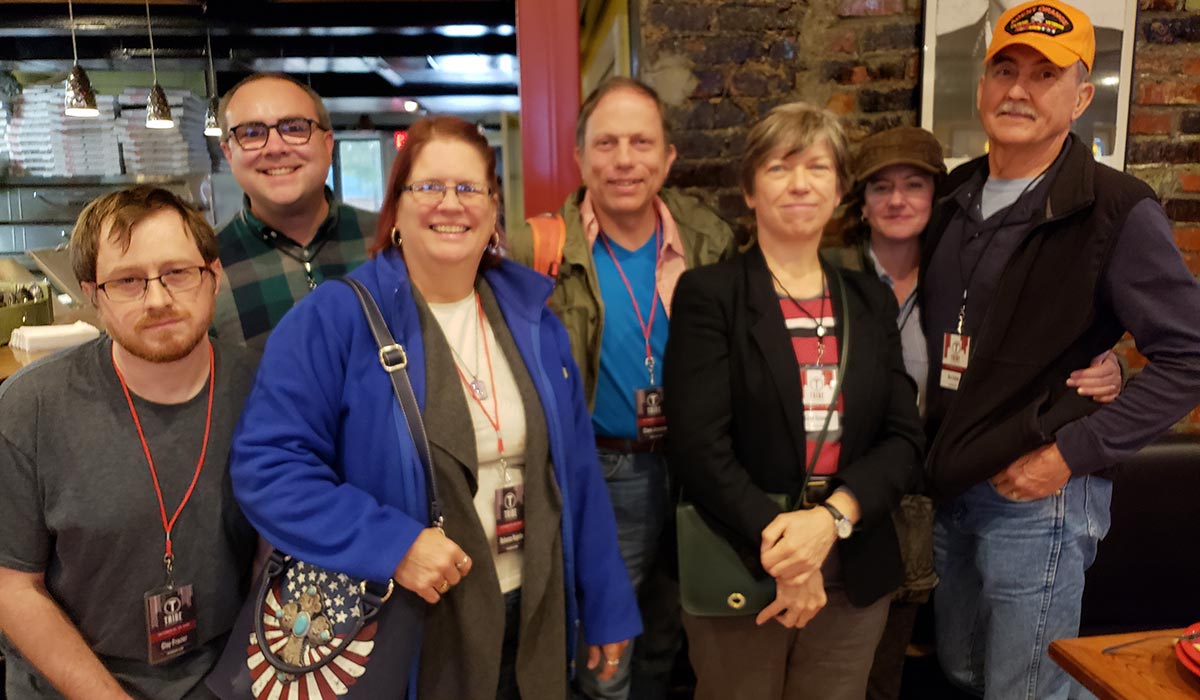
One of the days, I organized a lunch for fiction writers. Because for most people at the conference, “writing” means non-fiction books or blogging. Even so, there were some fiction writers at the conference and it was great to get together to find out what we’re all working on. Awesome spread: Coming of age, family saga, romance, sci-fi, steampunk, alternate universe.
Yes, we’re diverse. But have in common that we’re writing fiction. Lots of good conversation and ideas flowing. Now looking at ways to keep everyone connected for mutual encouragement.
It’s about time.
A writer friend from Tribe just launched a writing coaching challenge for children’s book authors to get their next book done in 90 days. She was inspired by one of the speakers at Tribe and already turned that spark into action.
For me, it’s about a novel. Some of you know that I’ve been working on a novel (CarensaHolt.com) for a long time. Really long time, because it keeps getting put on the back burner for more urgent projects. That’s about to change.
For me it’s about time to finish that book.
Never miss out!
Get an email update every time I publish new content.
Be the first to know!
